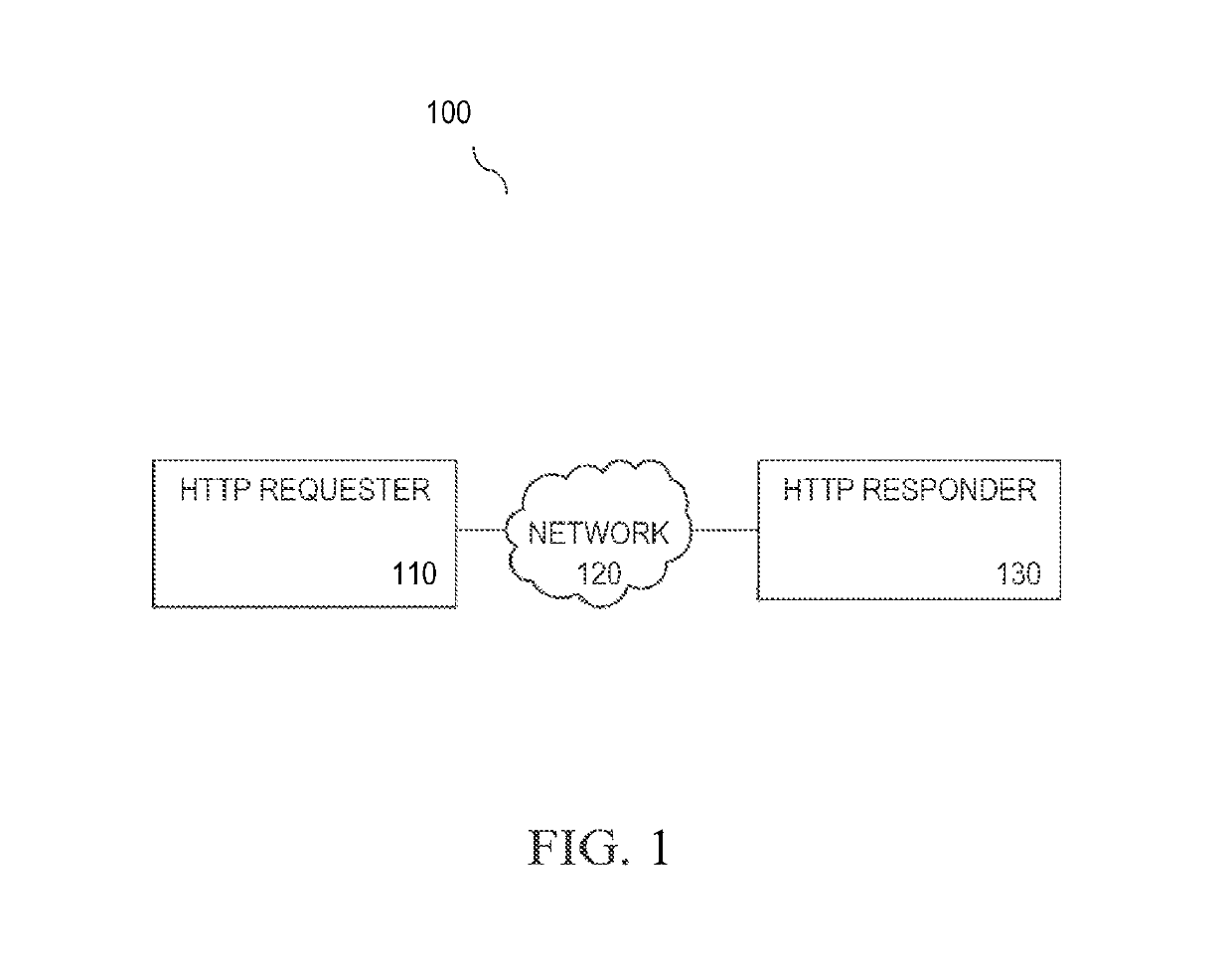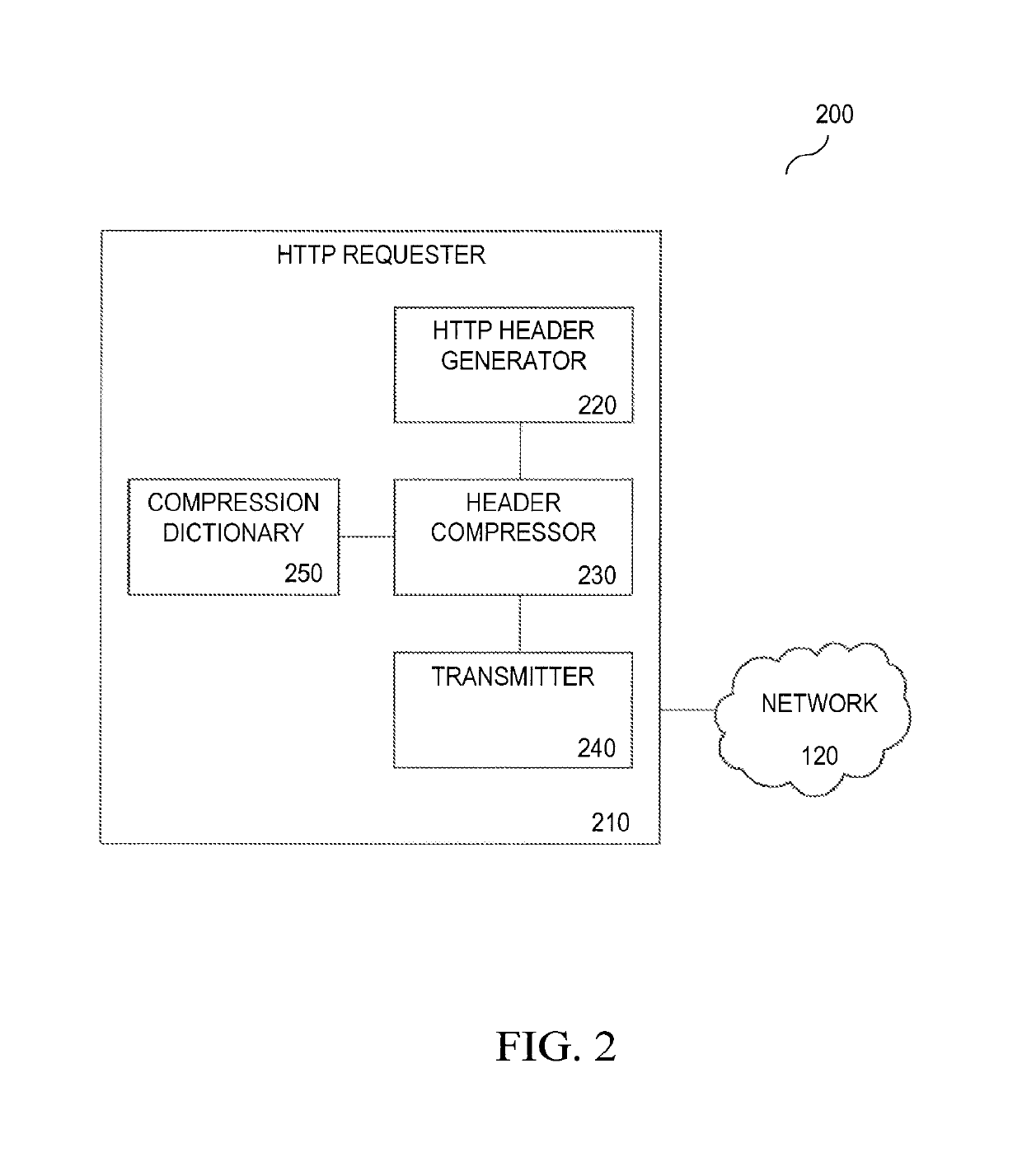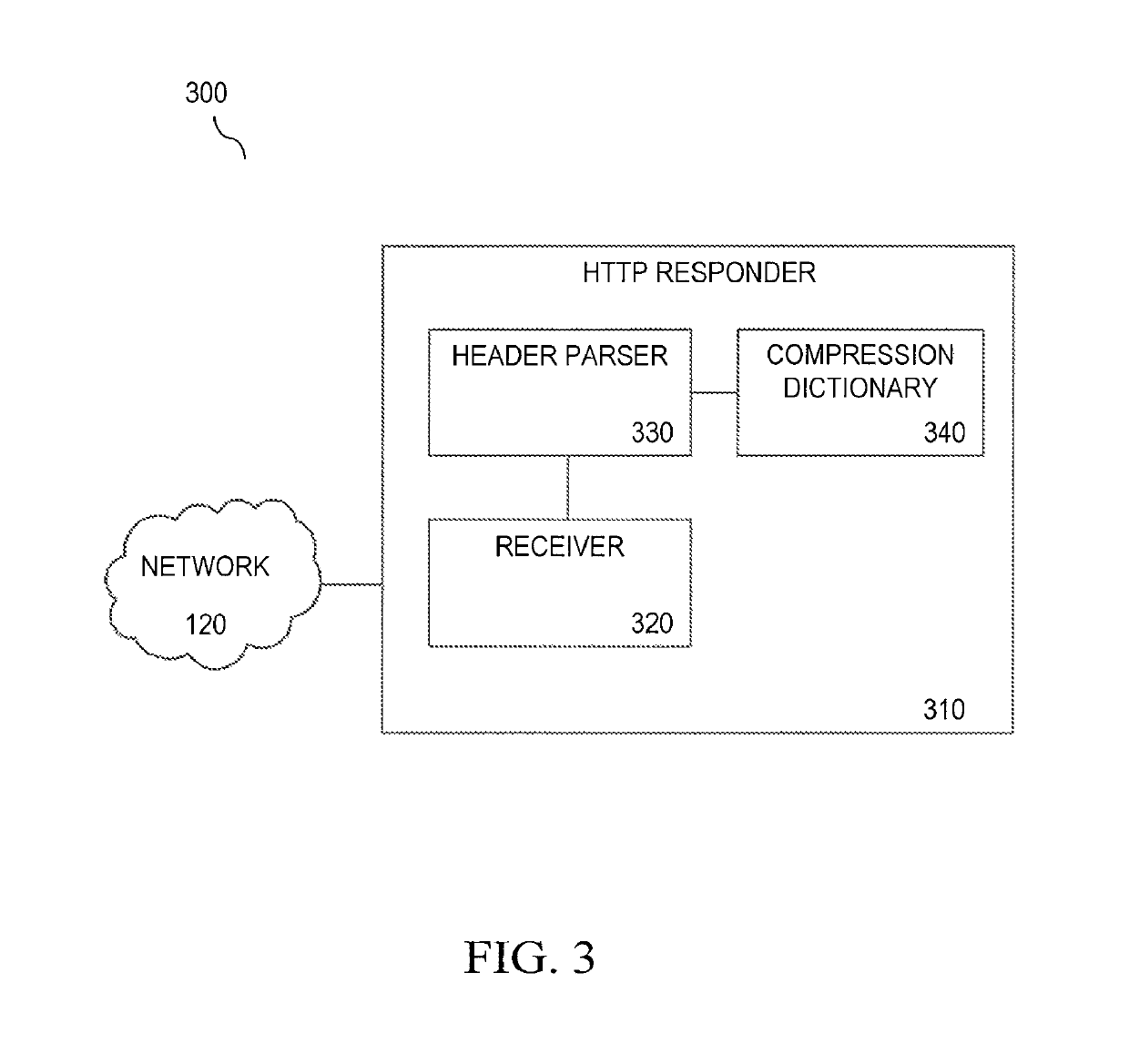Reduction of web page load time using http header compression
a compression and web page technology, applied in the field of internet communication, can solve the problems of not being able to meet the needs of users, not being able to use changes to existing transport protocols, and not being able to consider latency effects particularly well, so as to reduce web page load time
- Summary
- Abstract
- Description
- Claims
- Application Information
AI Technical Summary
Benefits of technology
Problems solved by technology
Method used
Image
Examples
example implementation
in a Framing Layer
[0043]According to some embodiments, HTTP header compression may be implemented in a framing layer for multiplexing multiple, concurrent streams across a single TCP connection. This framing layer may use the session layer between the HTTP application layer and the TCP transport layer that regulates the flow of data, as shown in Table 1 below.
[0044]
TABLE 1Portion of Protocol StackApplicationHTTPSessionFraming layerPresentationSSLTransportTCP
This “session” may be comparable to an HTTP request-response pair. For example, to initiate a new request, a web client may first create a new session. Once the session is created, the client can create a new stream to carry the request.
[0045]Streams are independent sequences of bi-directional data cut into frames. Streams can be created either by the client or the server, can concurrently send data interleaved with other streams, and can be cancelled. The usage of streams with HTTP is such that a single HTTP request / response occ...
PUM
 Login to View More
Login to View More Abstract
Description
Claims
Application Information
 Login to View More
Login to View More - R&D
- Intellectual Property
- Life Sciences
- Materials
- Tech Scout
- Unparalleled Data Quality
- Higher Quality Content
- 60% Fewer Hallucinations
Browse by: Latest US Patents, China's latest patents, Technical Efficacy Thesaurus, Application Domain, Technology Topic, Popular Technical Reports.
© 2025 PatSnap. All rights reserved.Legal|Privacy policy|Modern Slavery Act Transparency Statement|Sitemap|About US| Contact US: help@patsnap.com



